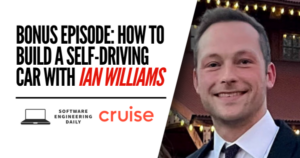Bad Men with Bob Hoffman
Podcast: Play in new window | Download
Subscribe: RSS


In the 1960s, advertising agencies were high-dollar creative producers. A client would come to an ad agency and pay millions of dollars for artistic messaging that would convince a consumer to buy a product.
How could you measure the success of these advertising campaigns? Maybe you could see success in the sales data. Maybe people were starting to talk about the product. Ultimately, success was defined by how satisfied the client was.
When it comes to measuring outcomes, advertising has always been a messy business.
Bob Hoffman’s long career in advertising included CEO positions at three different agencies. He helped huge brands craft their messaging, and grab consumer attention. In Bob’s world of advertising, lots of money was spent on creativity. Were the campaigns successful? That depends who you ask. In the old world of advertising, everyone acknowledged that success was subjective.
As human attention moved online, the world of advertising changed. Advertising began to move from TV and magazines to websites. Technology companies were formed to enable this new type of advertising–known as adtech. These companies claimed to bring scientific accuracy to advertising campaigns. The biggest adtech player was Google, who perfected search advertising.
If you could imagine the opposite of what Bob Hoffman built his career doing, it might look like search advertising.
Bob’s campaigns were about creating a brand’s voice, with colorful art and subtlety and ambient messaging. Advertising was about turning a brand into an entity you recognize, teaching the consumer to associate Nike with fitness, or Dove soap with clean hands, or Cheetos with cheesy, salty attitude.
Search advertising, on the other hand, is just text. You enter a search query, you are looking for black socks, and the top link that comes back is a line of text that says “cheap black socks.” Search advertising catches people who have an intent to do something. They have stated their intent by typing into a box. With search advertising, a brand might not even need a sexy, flashy creative.
The idea of intent-based advertising was expanded with retargeting. As you navigate through the internet, adtech companies are watching you, gathering data on your intent. Maybe you aren’t typing your desires explicitly into a search box–but you are clicking on articles and blog posts and tweets. With all your online interactions, adtech companies can figure out that you are looking for black socks whether you say so or not.
Money poured into adtech for very good reasons: intent-based marketing works. The shift to adtech put agencies in an uncomfortable position. If they couldn’t capture the advertising market by selling highly produced, unmeasurable creativity, they would have to make their money doing something else.
The situation was this: big brands like Procter and Gamble were buying most of their advertising through agencies. Procter and Gamble decided it wanted digital advertising. The adtech companies were the ones who knew how to produce and distribute digital advertising. Since agencies had the relationships with the big brands, and adtech companies had the technology, agencies began to partner with adtech companies.
This is actually a simplified version of what happens. Agencies subcontract advertising deals to digital agencies. A digital agency buys technology from a slew of adtech companies: some technology tracks users around the internet, some technology places bids on advertising spots that will land in front of users. Because of all the middlemen, the incentives are aligned against the brands.
Contrast this world of agencies and adtech companies with the world of Google and Facebook. They are a duopoly because they earned that position. By creating a single monolithic purchasing process, they have removed much of the risk that comes from a purchasing process stocked with middlemen.
But back to Bob Hoffman.
As money poured into adtech, user tracking, and Google, brands started to care more about metrics. When Bob met with a brand, the brand wouldn’t be asking about the cool new advertising campaign featuring a young actress drinking a Coca Cola. The brand would be asking about the click-through rate of a display advertising campaign.
Brands moved their focus to statistics, and away from creativity. And technology companies were happy to provide them with statistics. Whether those statistics were true or not is another story altogether. The industry was moving from creative BS to outright lying, and Bob decided to leave.
In today’s episode, Bob explains how the state of advertising became so problematic, and the ways in which it harms us Internet users.
We have done lots of reporting about advertising fraud for the last year, and it is a popular topic because people are often shocked to find that online advertising is inextricably linked to organized crime, surveillance, and Twitter botnets. That’s not to say that online advertising doesn’t work–it certainly does! But understanding the dark underbelly of the Internet’s cash cow is a necessary precondition to finding a solution.
To find all of our old episodes about ad fraud, you can download the Software Engineering Daily app for iOS and for Android. With these apps, we are building a new way to consume content about software engineering. They are open-sourced at github.com/softwareengineeringdaily. If you are looking for an open source project to get involved with, we would love to get your help.
Transcript
Transcript provided by We Edit Podcasts. Software Engineering Daily listeners can go to weeditpodcasts.com/sed to get 20% off the first two months of audio editing and transcription services. Thanks to We Edit Podcasts for partnering with SE Daily. Please click here to view this show’s transcript.



















